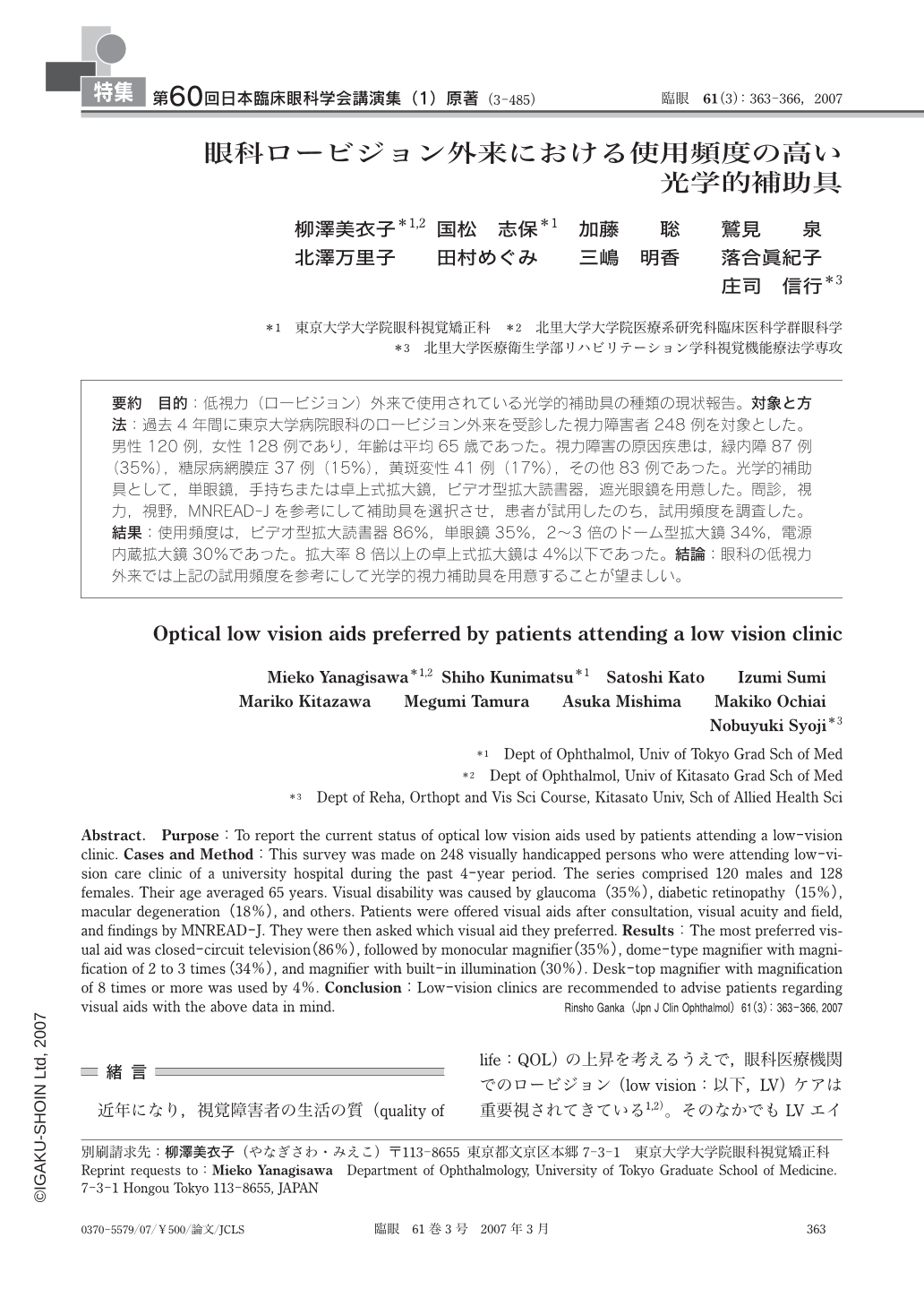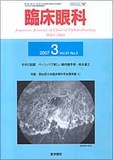Japanese
English
- 有料閲覧
- Abstract 文献概要
- 1ページ目 Look Inside
- 参考文献 Reference
要約 目的:低視力(ロービジョン)外来で使用されている光学的補助具の種類の現状報告。対象と方法:過去4年間に東京大学病院眼科のロービジョン外来を受診した視力障害者248例を対象とした。男性120例,女性128例であり,年齢は平均65歳であった。視力障害の原因疾患は,緑内障87例(35%),糖尿病網膜症37例(15%),黄斑変性41例(17%),その他83例であった。光学的補助具として,単眼鏡,手持ちまたは卓上式拡大鏡,ビデオ型拡大読書器,遮光眼鏡を用意した。問診,視力,視野,MNREAD-Jを参考にして補助具を選択させ,患者が試用したのち,試用頻度を調査した。結果:使用頻度は,ビデオ型拡大読書器86%,単眼鏡35%,2~3倍のドーム型拡大鏡34%,電源内蔵拡大鏡30%であった。拡大率8倍以上の卓上式拡大鏡は4%以下であった。結論:眼科の低視力外来では上記の試用頻度を参考にして光学的視力補助具を用意することが望ましい。
Abstract. Purpose:To report the current status of optical low vision aids used by patients attending a low-vision clinic. Cases and Method:This survey was made on 248 visually handicapped persons who were attending low-vision care clinic of a university hospital during the past 4-year period. The series comprised 120 males and 128 females. Their age averaged 65 years. Visual disability was caused by glaucoma(35%),diabetic retinopathy(15%),macular degeneration(18%),and others. Patients were offered visual aids after consultation,visual acuity and field,and findings by MNREAD-J. They were then asked which visual aid they preferred. Results:The most preferred visual aid was closed-circuit television(86%),followed by monocular magnifier(35%),dome-type magnifier with magnification of 2 to 3 times(34%),and magnifier with built-in illumination(30%). Desk-top magnifier with magnification of 8 times or more was used by 4%. Conclusion:Low-vision clinics are recommended to advise patients regarding visual aids with the above data in mind.

Copyright © 2007, Igaku-Shoin Ltd. All rights reserved.


